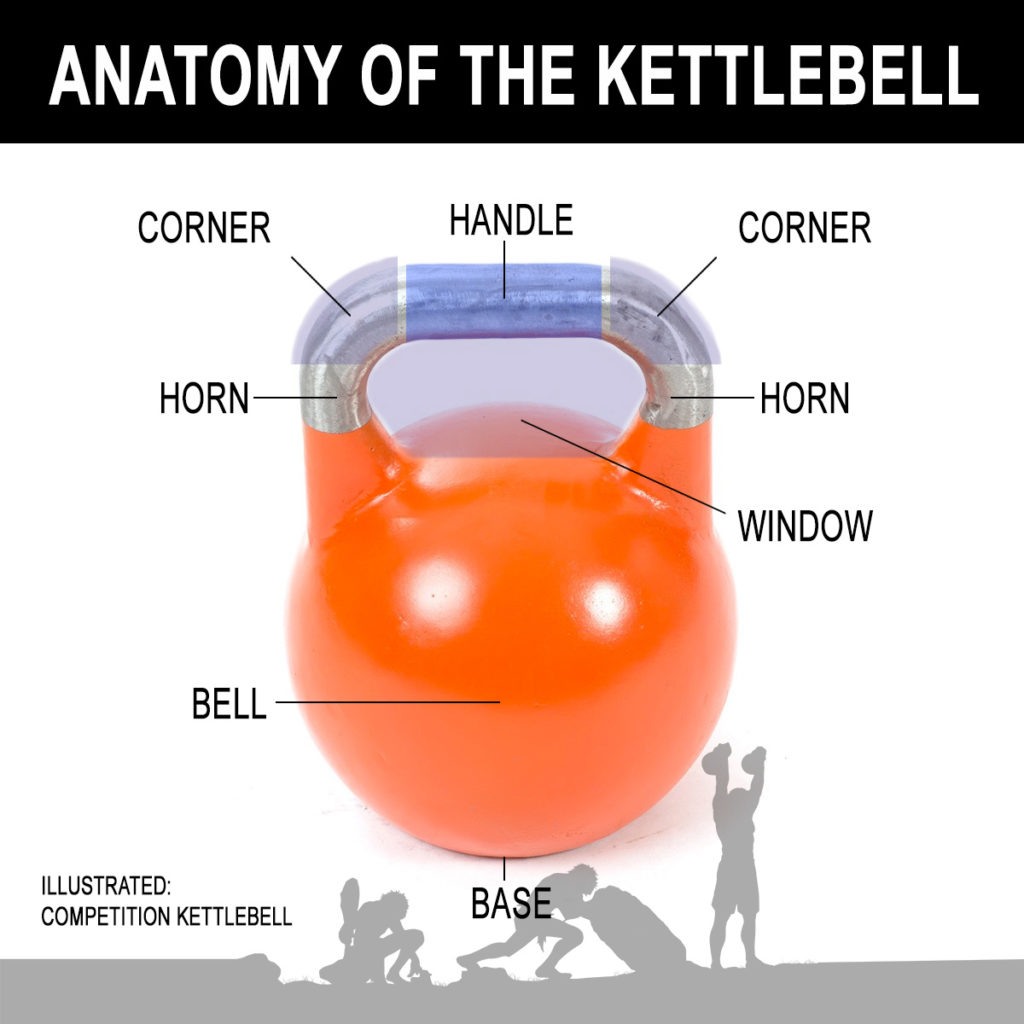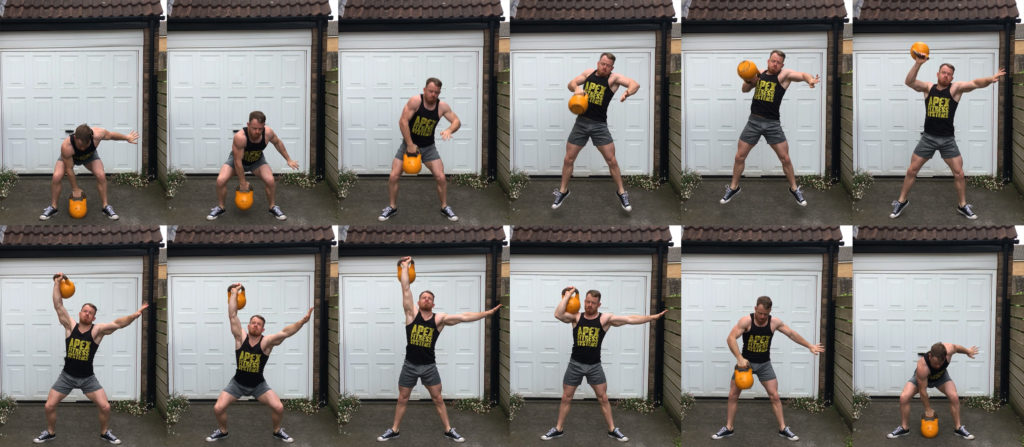Kettlebells are so hot right now and if you train with them maybe you are too. Thanks to a series of celebrity endorsements (Joe Rogan, et al), Kettlebells are often touted as the ideal training tool for BJJ and combat sports in general – but are they really that special?
In short, my answer would be they’re no more ‘special’ than an Olympic bar, Dumbbell or any other piece of strength and conditioning equipment. However, all equipment could be said to potentially afford benefits and drawbacks when compared to one another.
Kettlebells are extremely effective when utilised for ballistic or explosive movements, and this is obviously excellent to train for grappling. The design of the Kettlebell allows for a variety of exercises incorporating multiple joint actions, explosive movement, balance, coordination and often heavy recruitment from the posterior chain.

So, let’s look a little closer at the Kettlebell and how it can be used efficiently.
Where did they come from?
Kettlebells are said to have originated in Russia and were originally used as counterweight when measuring dry goods, farm products etc. From these humble beginnings they are then said to have been used as entertainment and finally as tools of exercise. Russia however is just one instance of this type of equipment being used; the Mongol Empire was well known for using shaped rocks and heavy pots in fitness, Shaolin Monks have been seen to employ Stone ‘Padlocks’ resembling the modern Kettlebell and I am sure many other cultures have their “version” of the Kettlebell.
All that being said, Russia has pioneered their successful use with athletes to produce some incredible results. The man credited with the development and utilisation of Kettlebell training is Dr. Vladislav Krayevsky, founder of the St. Petersburg Amateur Weightlifting Society – his ideas are largely responsible for shaping what we understand as strength and conditioning in the 21st century.
Here we can see their inclusion as part of the preparation and training for Wrestlers in Soviet Russia:
Enough with the history lesson – how do they apply to me?
What are they good for?
As I mentioned above, Kettlebells allow a variety of challenging movements that cover almost all aspects of fitness. They can enhance Strength, Speed, Endurance, Cardiovascular Fitness, Balance and Co-ordination. In my experience, they are best employed to improve an athlete’s explosive power.
Sold. What movements should I be doing?
As a grappler/BJJ player there are many movements that will add to building a fitter, stronger ‘machine’ (body) to enhance your abilities on the mat. Some of these will be dependent on your individual game – do you play guard or are you a takedown specialist? However, there are a few staples I encourage all of my athletes to include in their physical training.
The Kettlebell can effectively train all of the basic movement patterns of the body – Squat, Hinge, Lunge, Push, Pull, Twist. On top of this, the Kettlebell is a portable fitness item allowing you to train with relatively little space, virtually anywhere.
Personally I think some kits beat the Kettlebell for certain movements – I would rather a client deadlift or squat with an Olympic bar for example. However, for me, there are two Kettlebell exercises that are hard to beat and stand out at the top of the pyramid for combat athletes.
Heavy Swings
Swinging is an incredible movement to incorporate into your training (and you don’t even need to go to a special party to do it).
Swings utilize a ‘hinge’, which is one of the bodies main movement patterns, and recruit heavily from the posterior chain. We get excellent engagement from the Hamstrings, Glutes, Hips and Core when performing a swing and from this develop explosive ‘hip drive’. Hip drive is a huge asset in pretty much all combat sports, enhancing everything from bridging power to punching power.
For the grappler, swings should be performed with a medium to heavy weight for low reps – with an emphasis on explosive hip movement. These will help develop powerful hips, a strong back and core, as well as formidable grip strength.
Note: Don’t be the guy killing himself for time by performing 500 swings – the lower back wont thank you and although you’ll (maybe) get ‘conditioning’ benefits you will lose out on building true explosive power and, as your form suffers, most likely risk injury.
How to perform a Kettlebell Swing
- Set your feet roughly shoulder width apart and make sure you have good contact with the floor.
- Neck neutral and chest out—push your hips back. Hinge at the hips, keeping your weight over the middle of your foot. Bend slightly at your knees. You should feel your hamstrings engage.
- Think about how you would perform a broad jump and as you do let the kettlebell hang between your legs. You should feel like a ‘coiled spring’ hamstrings engaged, glutes primed and core tight and strong.
- Power your hips forward, squeezing your glutes hard and let your arms naturally raise with the momentum. Don’t try tofront raise the Kettlebell. The Kettlebell should lift no further than eye level as you complete the movement. Stand firm and do not let the kettlebell break your balance.
- Let the Kettlebell naturally move back through the arc you just created whilst you repeat the above steps (hinging at the hips with a soft knee etc). Once you reach the bottom of the movement explode back through again.

Single Arm Snatch
Not many movements can compete with the Snatch or Single Arm snatch for utilising incredible energy generation, multiple joint actions and astonishing energy transfer.
When performing this movement we achieve a staple of almost all athletic movements – the ‘triple extension’. Simply put, triple extension is the simultaneous or sequential extension of the ankle, knee, and hip joint. Triple extension allows an athlete to express maximal strength and power from the lower extremities and is essential in movements such as jumping or sprinting.
On top of the ability to generate incredible force, being able to achieve good triple extension is also a great method of injury prevention. The capacity to move through a good range of movement in these joints is crucial for athletes (and humans in general!). As a grappler, we utilise triple extension in many ways. We use it when we shoot for takedowns, lift or sweep an opponent and in many escaping movements.
Another benefit to the grappler is that the single arm snatch is a unilateral movement that places a great demand on the core through anti-horizontal flexion and even anti-rotation. There is also potential for increased neurological stress and adaptations due to loading only one side of the body. This translates well to grappling, as we often have to resist rotation at the trunk of the body as well as be able to balance in unorthodox and compromising positions both standing and on the ground.
Similar to the swing, I like the single arm snatch performed for low reps with a moderate to heavy weight for maximum power output.
How to perform a Single Arm Snatch
- Set your feet roughly shoulder width apart and make sure you have good contact with the floor.
- Neck neutral and chest out—push your hips back. Hinge at the hips, keeping your weight over the middle of your foot. Bend slightly at your knees. You should feel your hamstrings engage.
- Grip the Kettlebell with a single overhand grip. Base your other hand either on your thigh or float it next to your leg. Make sure your shoulders are in a higher position than your hips.
- Begin the exercise by forcefully extending the hips, knees, and ankles – triple extension.
- The Kettlebell will stay close to the body as it accelerates upward.
- As the lower body joints fully extend, rapidly shrug the shoulder of the arm – holding the Kettlebell. Start to bend that arm allowing your elbow to point outward as you pull the Kettlebell higher.
- As your arm pulls the Kettlebell as high as it can begin to start ‘pulling’ the body under the Kettlebell.
- Continue to pull with the arm holding the Kettlebell as high and as long as possible as you drop under the weight.
- The arm holding the Kettlebell should end straight above your head, fully supporting the Kettlebell. You will end in a quarter squat (or potentially lower) bracing the core and with the torso upright and head facing forward.
- Stand fully upright and stabilise the weight to end the movement – lower and repeat.

So there you have it, two of what I consider the best Kettlebell exercises to incorporate into your training program.
This is not an exhaustive list by any means, and there are some other contenders that just miss out on my top two spots. These would include:
- The Turkish Get Up
- The Single or Double Clean and Press
- The Overhead Lunge
- Weighted Sit up and Russian Twist
- Single Arm Floor Press
- The Angle Press
The Kettlebell is undoubtedly an excellent tool in the development of physical fitness for the grappler and combat athlete. It is a time-proven and battle-tested method of developing strength, power and conditioning with an incredibly versatile and accessible series of exercises possible.
As I have alluded to above, I don’t believe they offer any magical advantage (like not washing your belt) to your training, but when used and programmed correctly they can really augment your abilities and help develop explosive power to take your grappling to the next level.
Try adding the Swing and Snatch to your current training program and get ready to enjoy improved grip, a stronger core and the ability to generate some extreme power on the mat. You’ll become harder to move, harder to break and find it a lot easier to throw your partners around the training room.
Train Smart – Fight Easy
Want to get in touch with Tom? Check him out over at Apex Fitness Systems, or check out his other articles here at Grappling Insider.
Gorilla Sports supplied us with kettlebells to help with this article.
The post What’s the Deal with Kettlebells and BJJ? appeared first on Grappling Insider.The post What’s the Deal with Kettlebells and BJJ? appeared first on Grappling Insider.
